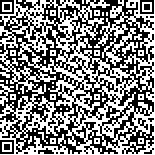| 摘要: |
| 缺乏运动导致的健康问题日益受
到关注,积极生活将增加体力活动融入日
常。“设计下的积极生活”(“Active Living
by Design”,ALbD)项目应对健康问题被
发起,从而更新项目理念与策略以适应新发
展。本文首先梳理积极生活相关研究的发展
脉络与实施评估,其次以时间为轴线例举不
同层次的实践项目,包括计划初期、发展阶
段和项目最新实践。研究成果、评估结果、实
践经验都为ALbD模式更新提供了基础。本
文最后重点分析ALbD新模式的理念、策略
与发展变化,并结合案例提出设计需要兼顾
合作与公平、可持续发展思想,同时要聚焦
服务群体、调动民间资本、构建社会规制。
本文通过解析设计的政策属性与制度导向,
以期为我国的积极设计与研究提供借鉴。 |
| 关键词: 健康城市,积极生活,城市设计,公共政策,体制构建 |
| DOI:10.13791/j.cnki.hsfwest.20200208 |
| 分类号: |
| 基金项目:国家留学基金委资助项目(201706060147) |
|
| Institutional-Oriented Design for Health and Its Enlightenment to China: “Active Living by Design” International Progress and Implications |
|
SUN Peijin,LU Wei
|
| Abstract: |
| Physical inactivity is one of the most important public health issues internationally.
Public health advocates have increasingly highlighted the importance of implementing
physical activity interventions. Active living is a way to incorporate physical activity into daily
life which could provide health benefits. The “Active Living by Design, ALbD” project is a
community grant program established to help communities create environments that support
active living. But the research of active living in China is still limited with little comprehensive
consideration of various factors promoting active living.
This paper first reviews the literature on active living from three aspect, including policy,
public support, and evaluation. Research has already found that active-living oriented zoning had
a positive impact on physical activity. Policies, like guidelines, principles, laws, and regulations
all could promote active living. Therefore, the renewal and reform of those policies is an effective
way for policymakers to create a physically active community, and urban planning regulations are
one of the most important parts of policy implementation. Furthermore, studies show that public
support for policies is also related to physical activity, thus public education and media coverage
addressing active-living issues can help shape a social environment in which facilitate active
living. Additionally, evaluating the effectiveness of the implementation process and results of the
project could figure out the existing limitations and strengthens of the ongoing project, which
needs multiple evaluation methods depending on different situations.
Secondly, we exemplify different levels of practical projects in time sequence, including
the initial period of the ALbD, the developing stage and the practices after the new concept
updated. The first level is the initial implementation of the 5P (preparation, promotions,
programs, policy, and physical projects) strategy. We exhibit five representative cases selected
from the initial 25 pilot areas. Then, the project of the second level covers several areas,
including parks, recreational facilities, schools, pedestrian and bicycle infrastructure, gardens
and workplaces. In the third level, Santa Ana, California, which is one of the initial pilot areas,
is used as an application example of the new model of community action.Further, this paper focuses on the improvement of the new model’s concept, strategy and renovation, which is related to various community
health goals. The new action model is concentrated from the initial 5P to the new 3P (partner, prepare, process) method. Through comparison
of the case study during past years and the concept change, we could get deep into the developing process of active living projects. In the early
stage, the implementation depicts a linear community change process. From pre-preparation and promotion to implementation and policymaking,
showing how a community could engage individuals in physical activity through design. However, the new community action model weakens the
order of execution but emphasizes the core concept of execution. The three concepts, including partner, prepare, and process, run through the
whole project, no longer a single procedure. Accordingly, ALbD puts forward new practical content based on initial one. The practical strategy of
the new model broadens the depth of the design content, which can be divided into two parts; focusing on equity and cooperation, including health
interests, community participation, joint leadership and strategic communication; emphasizing the idea of sustainable development, like strategy
of sustainable development and the construction of learning atmosphere.
Finally, this paper provides references for active living related design in China. 1) Shaping an active living norm through refined management.
The concept of active living can permeate every link of the traditional urban design management system. 2) Diversifying the foundation resources
and promote multidisciplinary partnerships. Communities in a variety of settings could adjust measures according to local conditions to encourage
multiple organizations to participate by publicizing the economic benefits brought by active living. 3) Focusing on the micro-scale improvement
of service groups. Renovation of micro-scale projects within the community can also improve lifestyles compared to traditional area planning.
Combined with the administrative system of our country, we can divide the design-related work into every community by starting from serving
smaller residential groups and encouraging community demonstration grant program.
This study analyzes the renewal of the ALbD project concept and the development of practice projects, finding that the design needs to
combine the concept of equity, cooperation, and sustainable development while using policy measures. The ALbD project starts with daily life
and practically implements the concept to every potential aspect, therefore reduces the timeliness and implementation difficulty of macro-scale
planning control. Different from the situation of European and American countries, domestic social projects are mostly led by the government.
The mechanism of multidisciplinary participation is lacking, and the active lifestyle and other health concepts are not considered high priorities
in community design. Therefore, we expect to offer references on integrating the design concept of active living into the policy implementation,
management and institutional level, which could broadly address physical activity, built environments, social support, and community awareness. |
| Key words: Healthy City Active Living Urban Design Public Policy Institutionalized Process |


